
Diversity, Equity, Inclusion: The Litmus Test for Modern Workplaces
February 13, 2025
April Hennessey
For Born Digital generations—Millennials and Gen Z, DEIB (Diversity, Equity, Inclusion, Belonging) isn’t optional—it’s the filter through which they evaluate everything. They don’t see diversity as a department or an initiative. They see it as a litmus test for whether a workplace truly values its people.
For them, DEIB is personal. It’s about belonging. It’s about knowing they won’t have to shrink, hide, or fight to be heard. And here’s the reality: if your organization can’t offer that, they’ll walk. The stakes are that simple.
DEIB: WHY IT’S NON-NEGOTIABLE FOR EMERGING TALENT
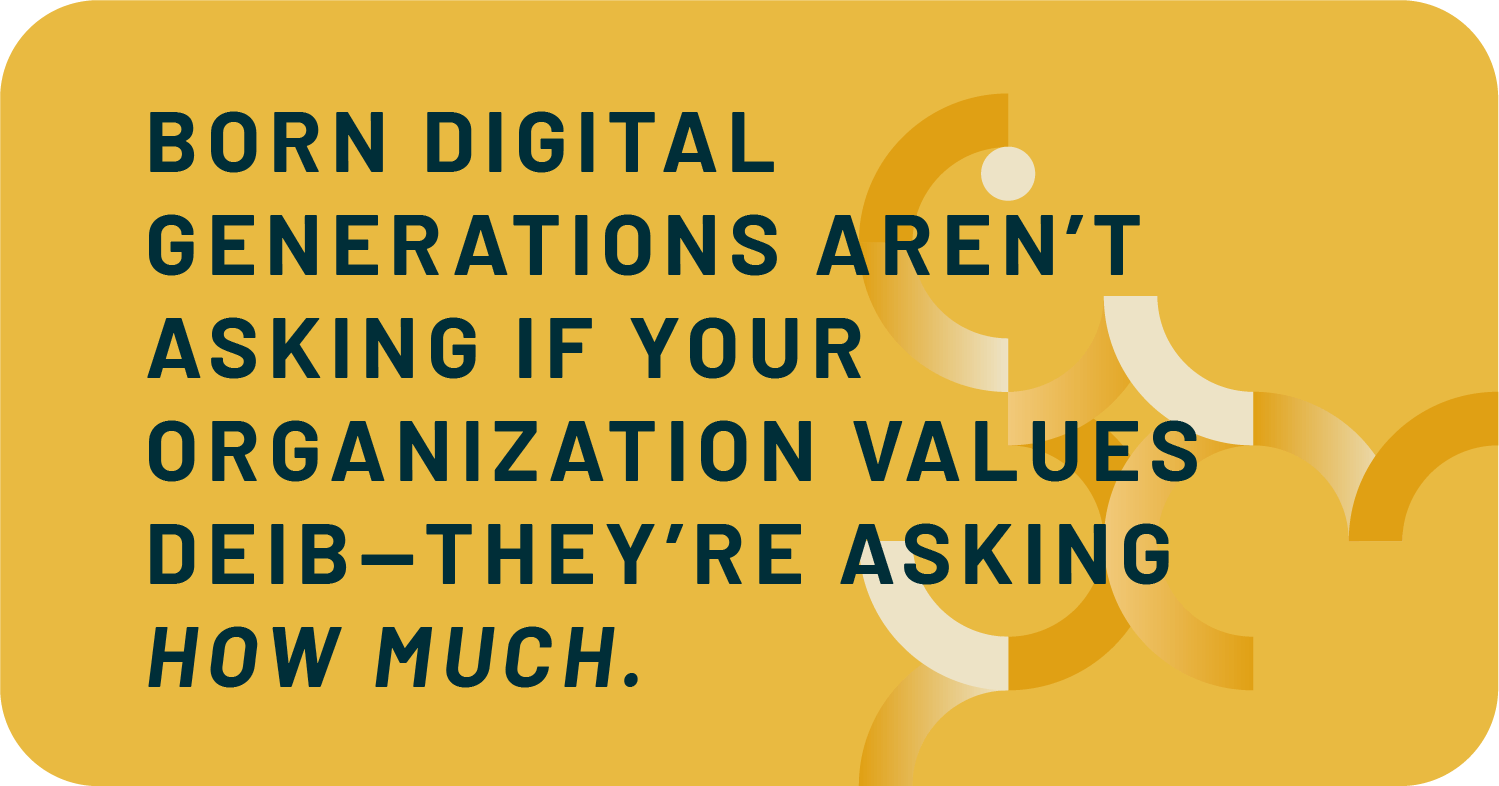
You can feel it in every job posting, every workplace review, every onboarding session: Born Digital generations aren’t asking if your organization values DEIB—they’re asking how much.
They’ve grown up knowing better. They have lived through global movements like #MeToo and Black Lives Matter, which exposed systemic inequities in the workplace and beyond. They’ve seen the harm caused when people are silenced and sidelined. And they’ve made it clear—they’re done tolerating it. They expect their employers to be done too.
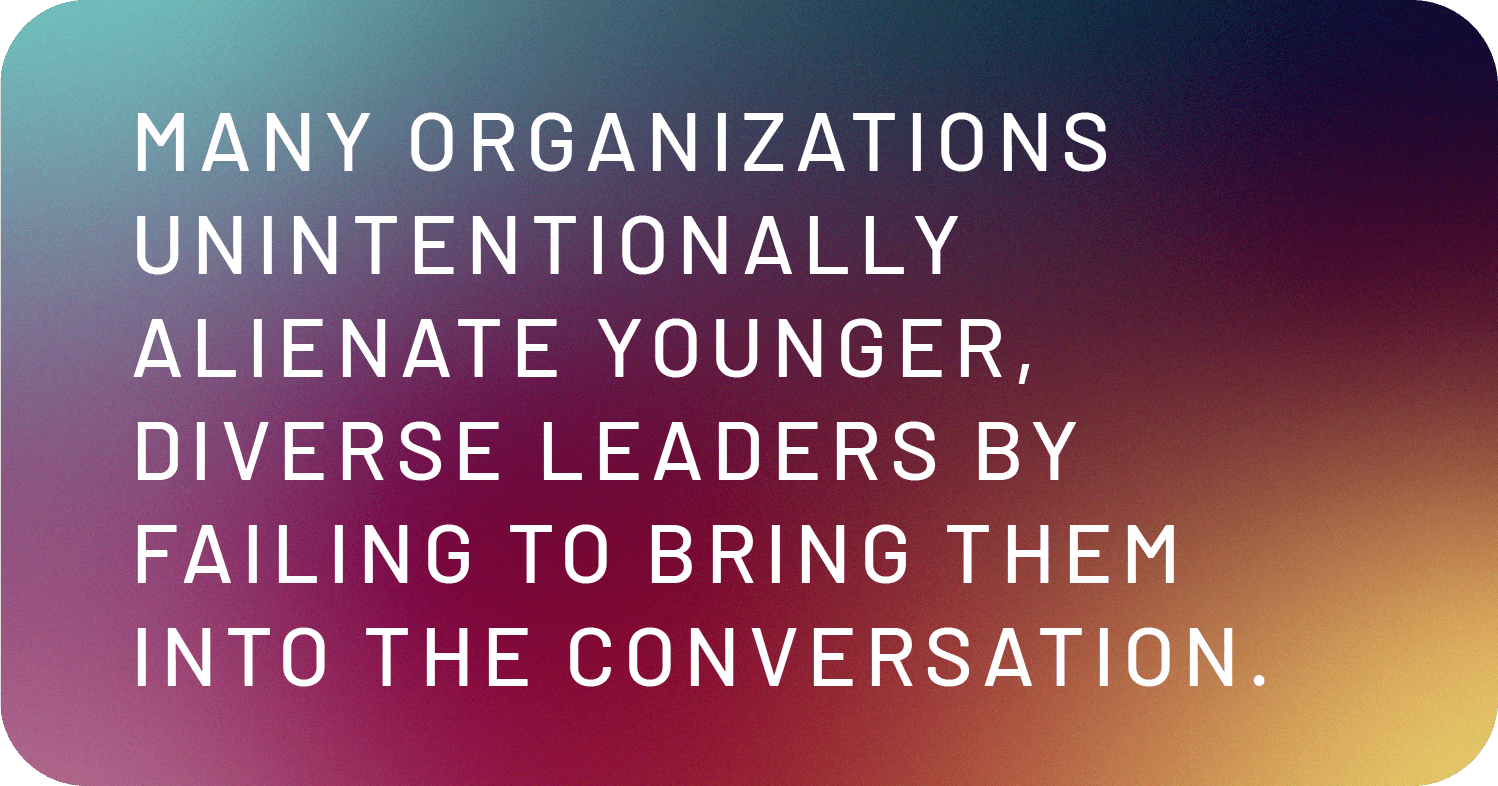
But many organizations unintentionally alienate younger, diverse leaders by failing to bring them into the conversation.
"Too often, companies overlook younger, diverse employees as sources of insight," says April Hennessey, Director of Strategy and Transformation and DEI Practice Lead at Blanchard. "While they might not have as much on-the-job experience or time in the workforce, they can often be much closer to the current market, the trends, and the chatter "in the streets" that’s shaping business today. They bring innovative ideas about how to sell and connect that more seasoned leaders might miss. The problem? Those perspectives never make it into the room when key decisions are being made."
The fix? Look at who’s in the room when decisions happen. If DEIB efforts aren’t leading to diverse voices actually influencing strategy, they’re failing. Before a new initiative rolls out, organizations should ask themselves: Would a younger, more diverse leader see this as forward-thinking, or would they call it outdated—or worse, an ‘ick?’.
DEIB is about more than fairness—it’s about potential. When people with different perspectives come together, they create better solutions. If a workplace lacks diversity, our youngest leaders see an uninspiring echo chamber—they see limits. And they’re not interested in being part of a company that’s stuck in the past.
TRANSPARENCY AND ACCOUNTABILITY: DEIB REQUIRES MORE THAN A STATEMENT
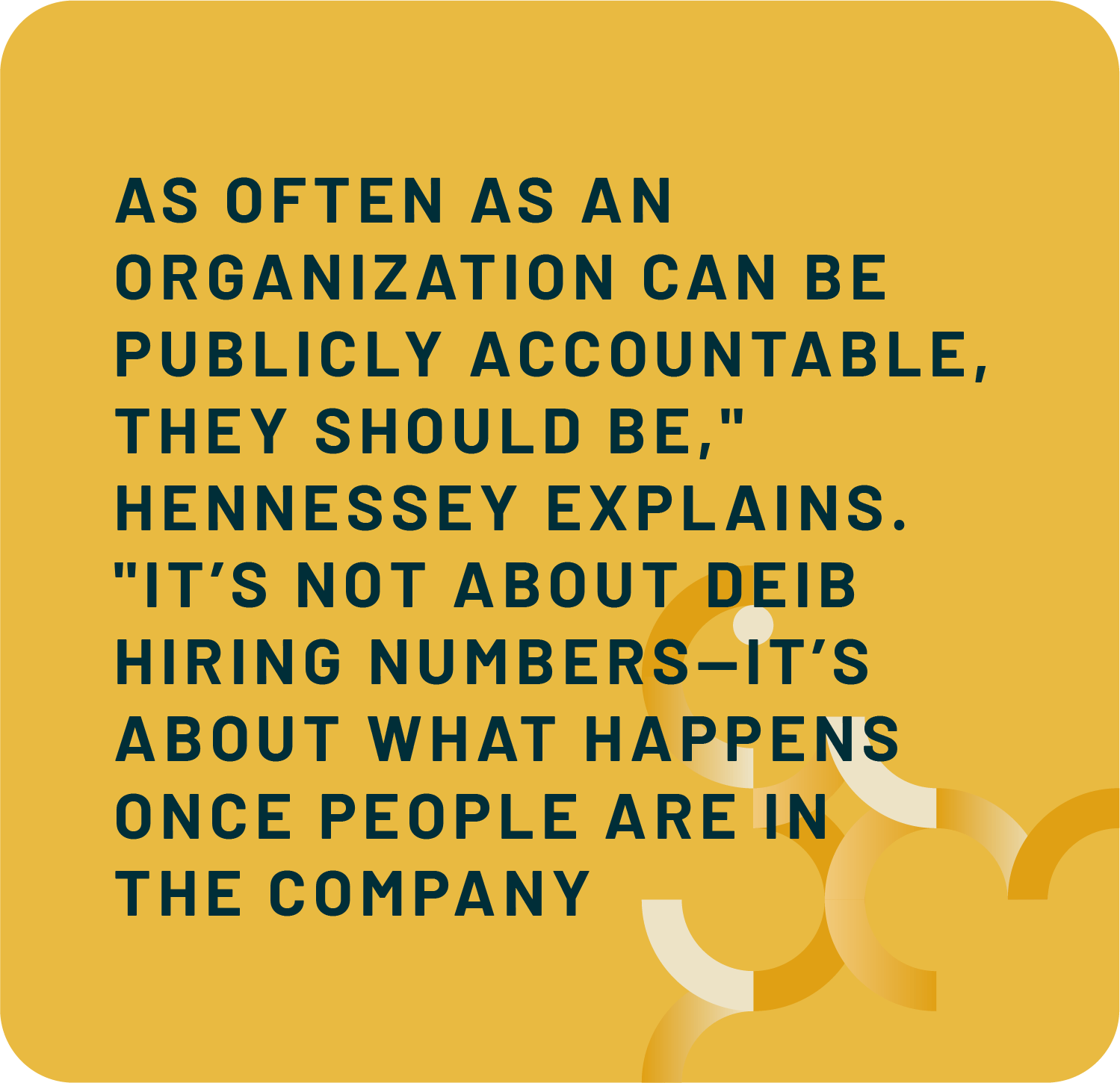
THE CLASH: A BACKSLIDE ON DEIB
Here’s the thing: most people know that having a diverse workforce is important. They’ve seen the studies, the statistics, and the success stories. But when pressure mounts—some start to question if it’s worth the effort. Recently, some companies have pulled back their DEIB efforts. Legal challenges, political backlashes, and budget constraints are often the reasons given.
Regardless of the explanation, the result is the same: a retreat from progress. And for the younger generations, that’s a betrayal of what they expect from their workplaces.
In the U.S., the Supreme Court’s 2023 ruling against affirmative action gave fuel to critics of DEIB. Legal challenges followed, targeting initiatives like diversity fellowships and supplier diversity quotas. Then, in early 2025, President Donald Trump signed an executive order eliminating DEIB programs across the federal government, calling them “illegal and immoral discrimination.”
Private companies soon followed. Walmart shuttered its $100 million DEIB nonprofit. McDonald’s abandoned its diversity targets. Meta and Amazon quietly scaled back their programs, citing a shifting “legal and policy landscape.”
Not every organization pulling back is abandoning its values. Some are recalibrating—trying to navigate a complex, polarized environment while avoiding legal risks. Others are struggling to justify long-term DEIB investments amidst economic pressures. But if they don’t make the right decisions at the end of the day, what are they risking?
SCALING BACK DEIB: THE RISKS YOU CAN’T IGNORE.
Let’s be generous: these challenges are real. But here’s the bigger truth—pulling back on DEIB isn’t just an optics issue—it’s a risk to the entire organization. From talent retention to profitability, here’s what’s at stake:
- Your Best Potential Talent: Millennials and Gen Z are the most diverse workforce in history—and the most values-driven. A study by Indeed and Glassdoor found that these generations are significantly more likely to value DEI in the workplace. Without DEIB, you’re sending them a clear message: “We don’t prioritize your values.”
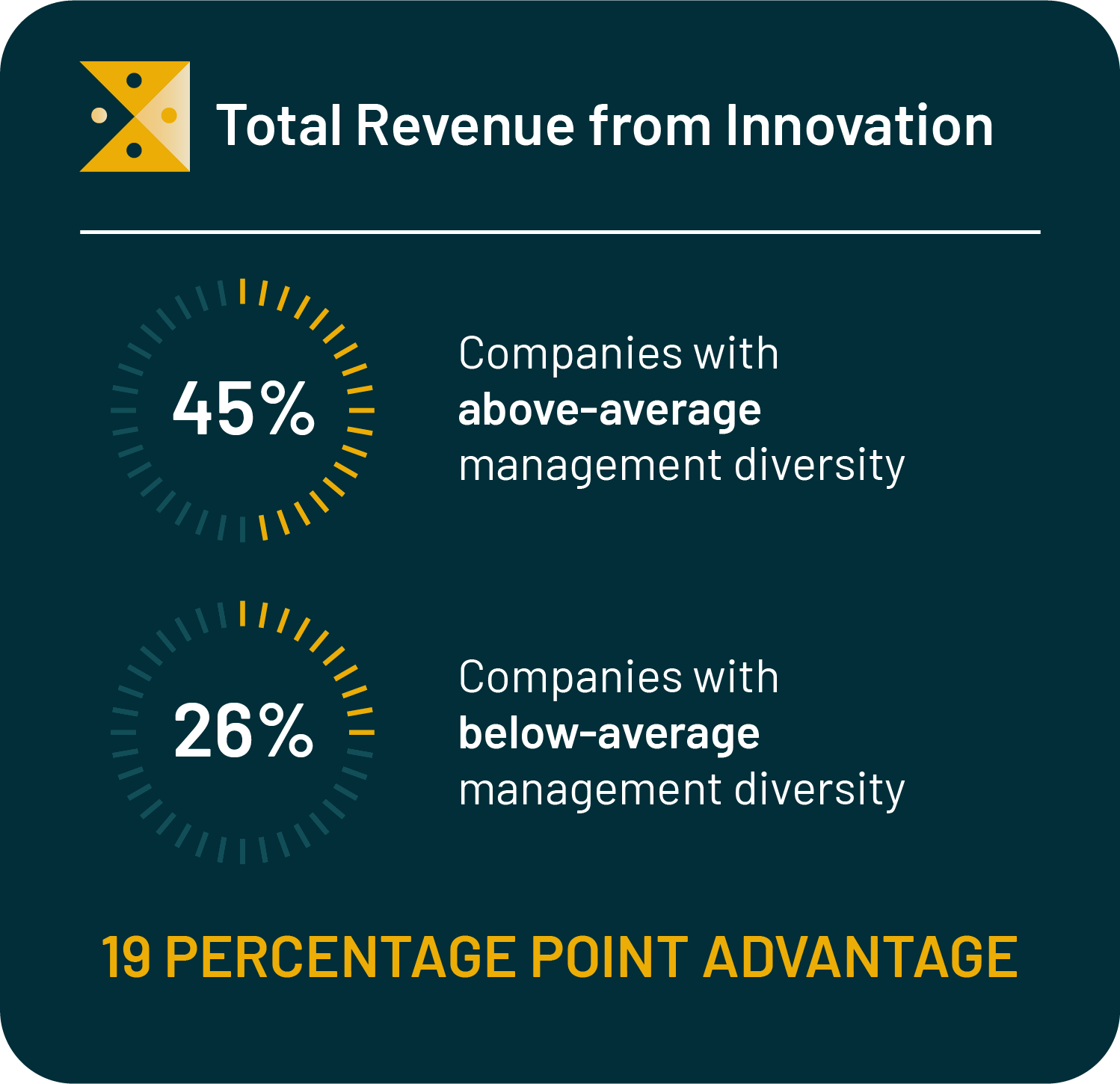
- Your Team’s Creativity: Diverse teams drive better ideas. Research from Boston’s Consulting Group found that companies with above-average management diversity generate 45% of total revenue from innovation, compared to just 26% in less diverse companies—a 19 percentage point advantage. Without DEIB, you risk groupthink, missed opportunities, and falling behind competitors who foster inclusion.
- Your Credibility: In an age of transparency, performative efforts or outright retreats from DEIB are glaringly obvious. Companies like Walmart and McDonald’s have faced public criticism and reputational damage for rolling back their diversity commitments. Employees, consumers, and stakeholders are quick to call out these decisions—and when young leaders are looking for companies to have long-term careers with, they won’t forget which ones went back on their word.

Your Global Growth: Expanding into diverse markets requires more than cultural competence—it requires a workforce that reflects and understands those markets. Companies that embrace DEIB gain access to a broader talent pool, stronger customer connections, and increased profitability. The organizations that fail to adapt? They risk irrelevance in a global economy that is more diverse, connected, and values-driven than ever before.
Your Profitability: The financial benefits of diverse leadership are undeniable. McKinsey research shows that companies in the top quartile for gender diversity on executive teams are 25% more likely to experience above-average profitability than those in the bottom quartile. Organizations that scale back DEIB aren’t just losing talent and creativity—they’re leaving real revenue on the table.
WHAT’S AT STAKE? YOUR FUTURE LEADERSHIP.
Most organizations are already struggling to develop strong leadership pipelines. According to DDI’s Global Leadership Forecast 2023, only 12% of companies report having strong bench strength, meaning they’re struggling to develop leaders who can step into critical roles when needed.
Scaling back DEIB efforts doesn’t just limit your talent pool—it undermines your ability to build the leadership pipeline you’ll need for the future. Why? Because diversity isn’t just a metric—it’s a driver of leadership development and long-term success.
The data tells a clear story:
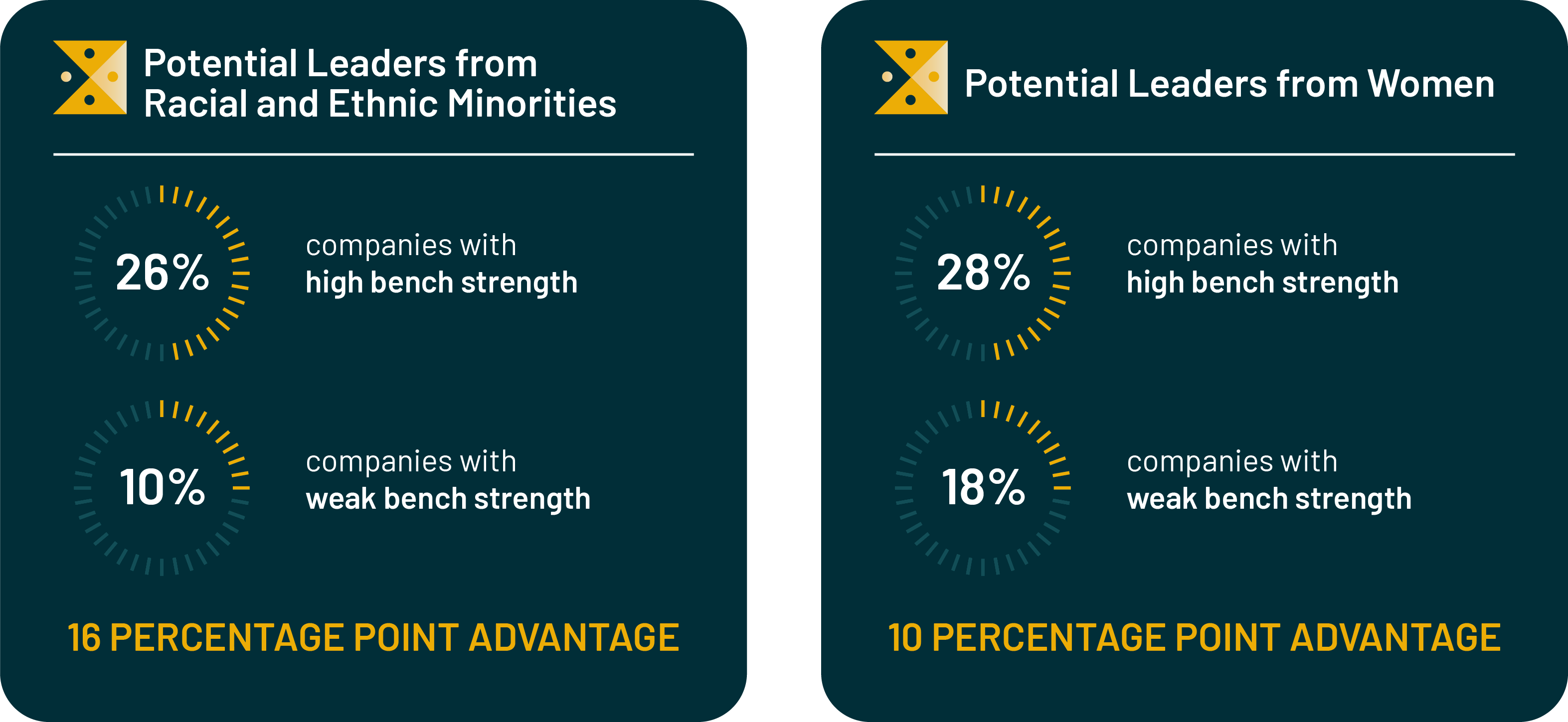
- In companies with high bench strength, 26% of high-potential leaders come from racial and ethnic minorities. In companies with weak benches, that number drops to just 10%.
- Women make up 28% of high-potential pools in companies with strong leadership benches, compared to only 18% in those struggling to fill key roles.
But the numbers are just part of the story. Companies with stronger leadership benches don’t just recruit talent—they cultivate it through inclusion. They challenge outdated thinking, prioritize growth opportunities, and ensure diverse voices are heard.
ONE OF THE BIGGEST MISSED OPPORTUNITIES? BI-DIRECTIONAL MENTORSHIP.

"Most organizations treat mentorship like a one-way street," Hennessey explains. "More seasoned leaders guiding younger employees. But what if we flipped the model? What if leaders also positioned themselves as students—learning from the younger, diverse voices in their organizations?
The world has changed enormously in the past 6-7 years. And while those of us already in the workforce have had to train new muscles, learn new practices, and navigate a slippery-fish world that feels like it's almost always eluding our grasp, many of our younger employees are fluent in things that are new to a large portion of the workforce.
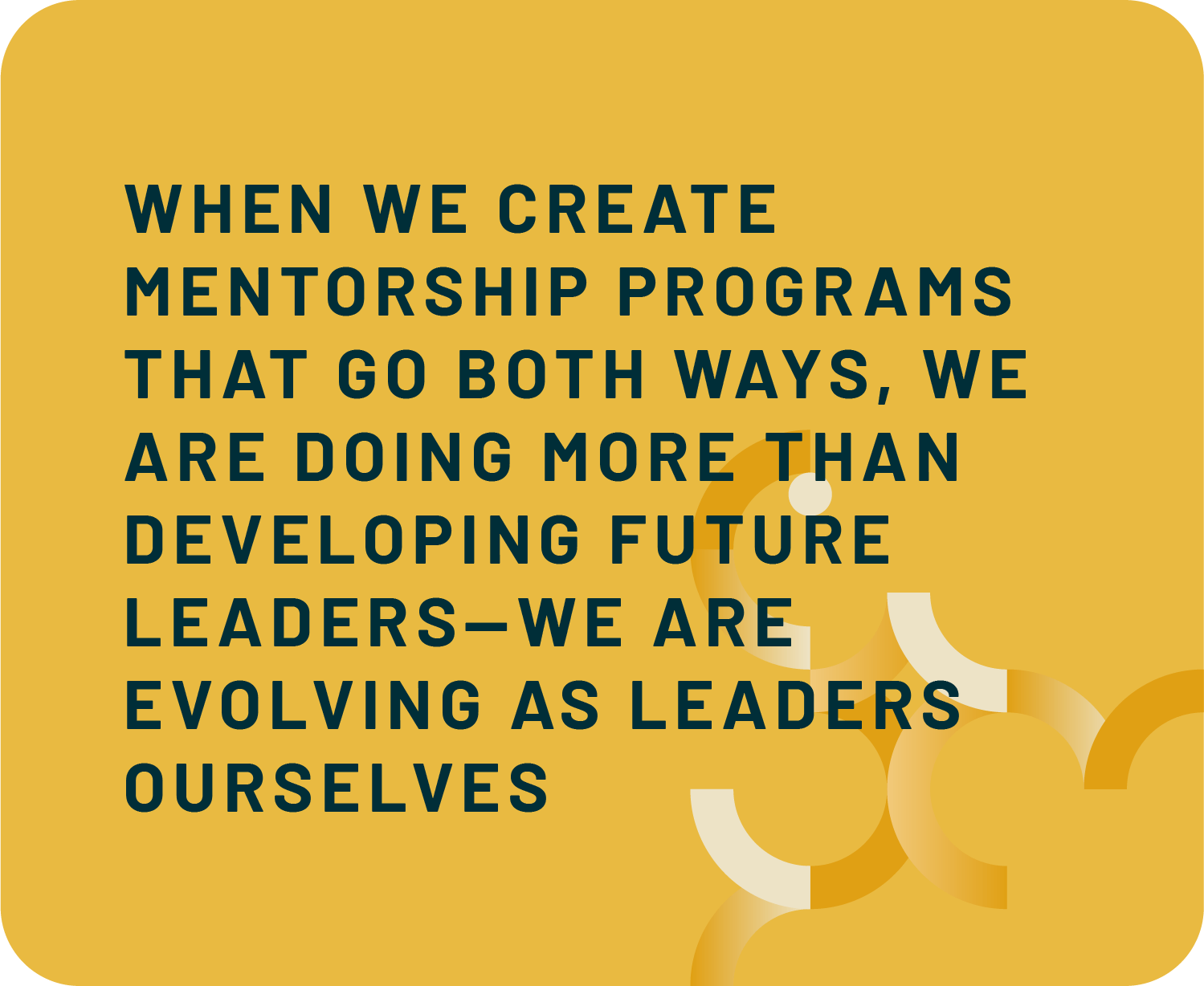
Things like pronoun usage are hard-coded into their wiring; language is agile and flexible rather than fixed. They adopt new tech daily. They are great readers of the zeitgeist. They bring new tools, new ideas, and new ways of seeing old challenges.
When we create mentorship programs that go both ways, we are doing more than developing future leaders—we are evolving as leaders ourselves."
The message is clear: if you’re not investing in DEIB, you’re not just limiting your talent—you’re limiting your future. The companies that succeed tomorrow will be the ones building diverse, inclusive leadership pipelines today.
BLANCHARD: A STUDY OF DEIB IN ACTION
While some companies are scaling back their DEIB commitments, Blanchard is doubling down. Recognizing that inclusive leadership isn’t just about policy but about action, Blanchard has embedded DEIB into every aspect of its culture, leadership strategy, and employee experience—believing that diversity, equity, inclusion, and belonging aren’t just words but lived experiences.
DEFINING DEIB AT BLANCHARD
Blanchard’s vision—The Heart of Human Achievement™—is at the core of its DEIB strategy. Recognizing that true leadership is inclusive leadership, the company has taken intentional steps to foster an environment where all employees feel valued, heard, and empowered.
They formalized their efforts through the DEI Action Team, which has been instrumental in driving change across the organization. Over the past few years, this team has focused on evaluating and improving internal policies, amplifying underrepresented voices, and fostering a culture where all employees, regardless of background, have the support they need to thrive.
FROM CONVERSATION TO ACTION
Blanchard understands that meaningful DEIB—is visible and actionable. Key initiatives include:
- Compassionate Conversations: A structured dialogue series where employees engage in open discussions on identity, inclusion, and equity in the workplace.
- Bi-Directional Mentorship: Instead of traditional top-down mentorship, Blanchard fosters a culture where leaders learn from emerging talent just as much as they mentor them—embracing the perspective and expertise of younger, diverse employees.
- Inclusive Language and Training: Blanchard’s Inclusive Language Guide ensures that internal and external communications reflect a culture of respect and belonging.
- Celebrating Diversity in the Workplace: Recognizing events like Disability Pride Month, Juneteenth, and cultural celebrations reinforces Blanchard’s commitment to honoring all identities and lived experiences.
- Employee Resource Groups (ERGs) – Blanchard creates safe spaces for underrepresented voices; groups that provide employees with opportunities for mentorship, networking, and professional development while ensuring diverse perspectives are reflected in decision-making.
- Wellness Days Dedicated to Mental Health – Blanchard offers designated Wellness Days to encourage employees to prioritize their mental health—ensuring that employees have time to rest, recharge, and care for themselves without stigma.
- DEIB Accountability Through Employee Feedback – Blanchard actively measures its progress through an internal DEI survey led by the People + Culture team. This survey gathers employee insights on workplace inclusivity, leadership effectiveness, and areas for improvement—continually refining their efforts based on real employee experiences.
BOTTOM LINE: DEIB IS A LONG GAME
Let’s be honest—DEIB isn’t easy. It’s uncomfortable. It forces us to confront old habits, challenge blind spots, and rethink how we lead. But here’s the truth: discomfort is where growth happens. And the organizations willing to lean into that discomfort are the ones that will thrive.
DEIB isn’t up for debate—it’s a fundamental part of building a thriving, innovative, and competitive workplace. It’s a mindset—a way of operating that shapes how we hire, develop, and inspire our people.
And the new generation won’t wait for companies to catch up. They’re looking for workplaces that align with their values, where they can bring their whole selves to work and know they’re contributing to something bigger.
So, here’s the challenge: Stop asking if you can afford to invest in DEIB. Start asking what it will cost you if you don’t.
